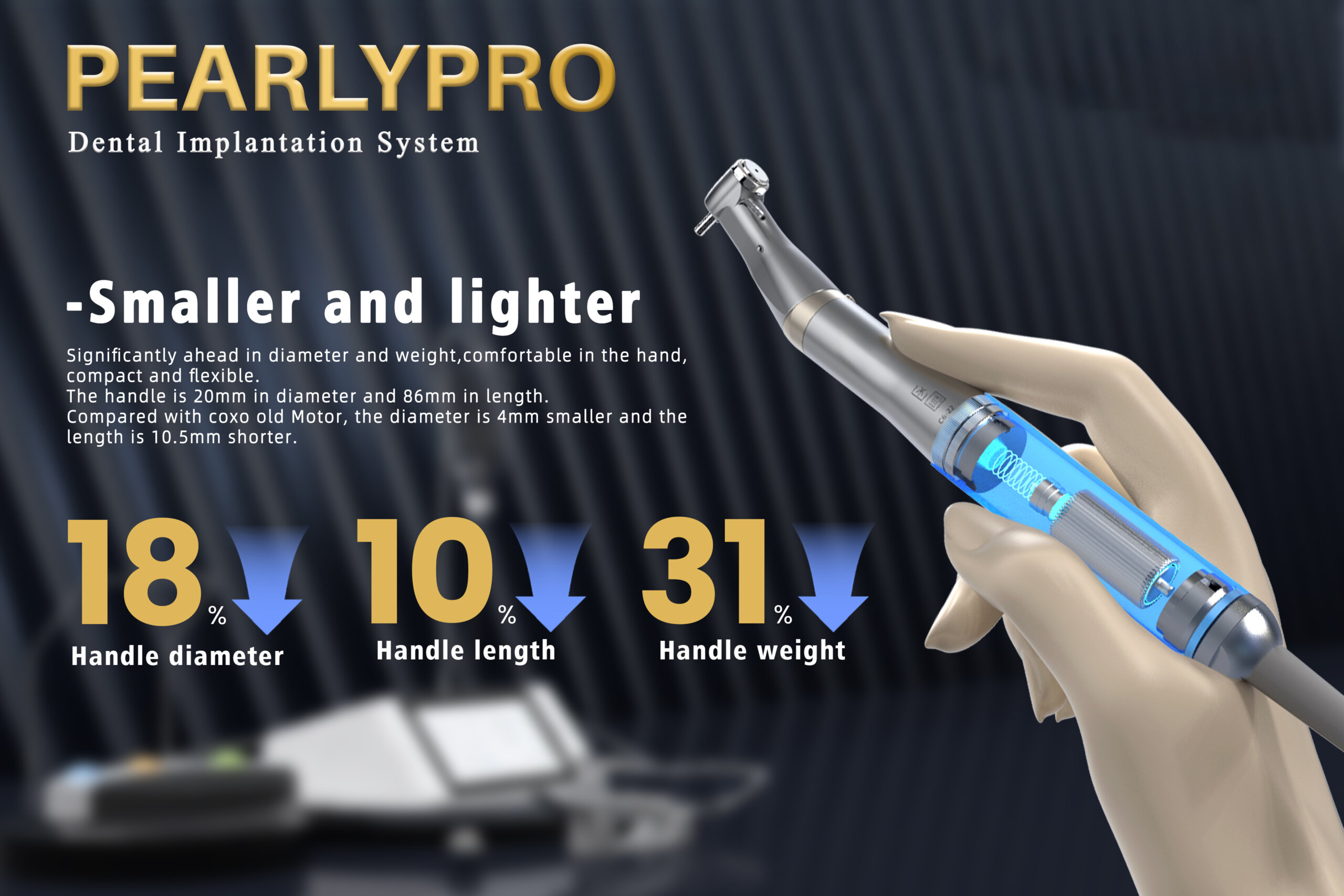A dental implant machine is a device used in oral implant surgeries. It utilizes a high-speed rotating drill to place implants into the alveolar bone, making it an indispensable tool in modern dental implant procedures.
Classification of Dental Implant Machines
Currently, dental implant machines on the market are mainly divided into two types: mechanical dental implant machines and electric dental implant machines.
Mechanical dental implant machines require manual rotation of the drill, making the operation more complicated, but they are relatively inexpensive. On the other hand, electric dental implant machines use an electric motor to drive the rotation of the drill, offering more convenience and speed in operation, but they come at a higher price.
The advantages of oral implants

1. Efficiency:
The high-speed rotating drill of the dental implant machine allows for quick and precise placement of implants into the alveolar bone, reducing surgery time and improving overall procedural efficiency.
2. Safety:
The drill of the dental implant machine can be precisely positioned and controlled according to the diameter and depth of different implants, minimizing the risk of accidental injury during surgery, thereby ensuring the safety of the procedure.
3. Comfort:
The high-speed rotating drill of the dental implant machine reduces vibrations and cutting noises in the alveolar bone during the surgery, which helps alleviate pain and anxiety in the patient, enhancing the overall comfort of the procedure.
4. Precision:
The high-speed rotating drill allows for accurate positioning and control based on the diameter and depth of the implant, ensuring the precision and stability of the implant placement.
How to Use a Dental Implant Machine

1. Preparation
Before using the dental implant machine, several preparations are required. First, ensure that the necessary implants and surgical instruments are ready. Next, conduct a thorough oral examination of the patient to determine the implant location and quantity. Finally, check and maintain the dental implant machine to ensure it is functioning properly.
2. Install the Surgical Handpiece
Dental implant machines are typically equipped with multiple types of surgical handpieces. The surgeon should choose the appropriate handpiece based on the procedure’s needs. Installation generally involves inserting the handpiece into the machine’s handpiece socket and tightening it with a fixing screw.
3. Adjust Parameters
The dental implant machine allows for the adjustment of various parameters, such as speed, torque, and sensitivity. These settings should be tailored to the needs of the procedure. For example, deeper implants may require higher speed and torque, while smaller implants may require reduced sensitivity.
4. Begin Surgery
Before starting the surgery, the patient should be administered local anesthesia. The surgeon can then use the dental implant machine to precisely place the implant in the patient’s mouth. During the procedure, the surgeon should maintain proper technique, keep the surgical area clean, and monitor the depth and angle of the implant.
5. Cleaning and Maintenance
After using the dental implant machine, it is important to clean and maintain the equipment. First, remove the surgical handpiece and clean it with an appropriate cleaning solution. Next, disinfect and clean the machine to prevent cross-contamination. Finally, perform regular maintenance to ensure the machine’s longevity.
The dental implant machine is a high-precision, reliable device that enhances the success and outcome of implant surgeries. However, its full potential can only be realized when used and maintained correctly by the surgeon.
Precautions for Using a Dental Implant Machine

- Before operation, carefully read the user manual to understand the device’s operating procedures and precautions.
- Check the equipment for normal functionality before use. If any issues are detected, perform timely repairs or replacements.
- Wear protective equipment, such as masks and gloves, during operation to prevent contamination of the surgical area.
- During operation, ensure proper control of the drill’s depth and direction to avoid accidental injury to surrounding tissues and organs.
- After use, clean the equipment promptly and perform disinfection procedures to ensure its safety and hygiene for future use.
What can dental x-ray machines do for dentists?
Enjoy your imagination
It’s not just imagination
– END-








